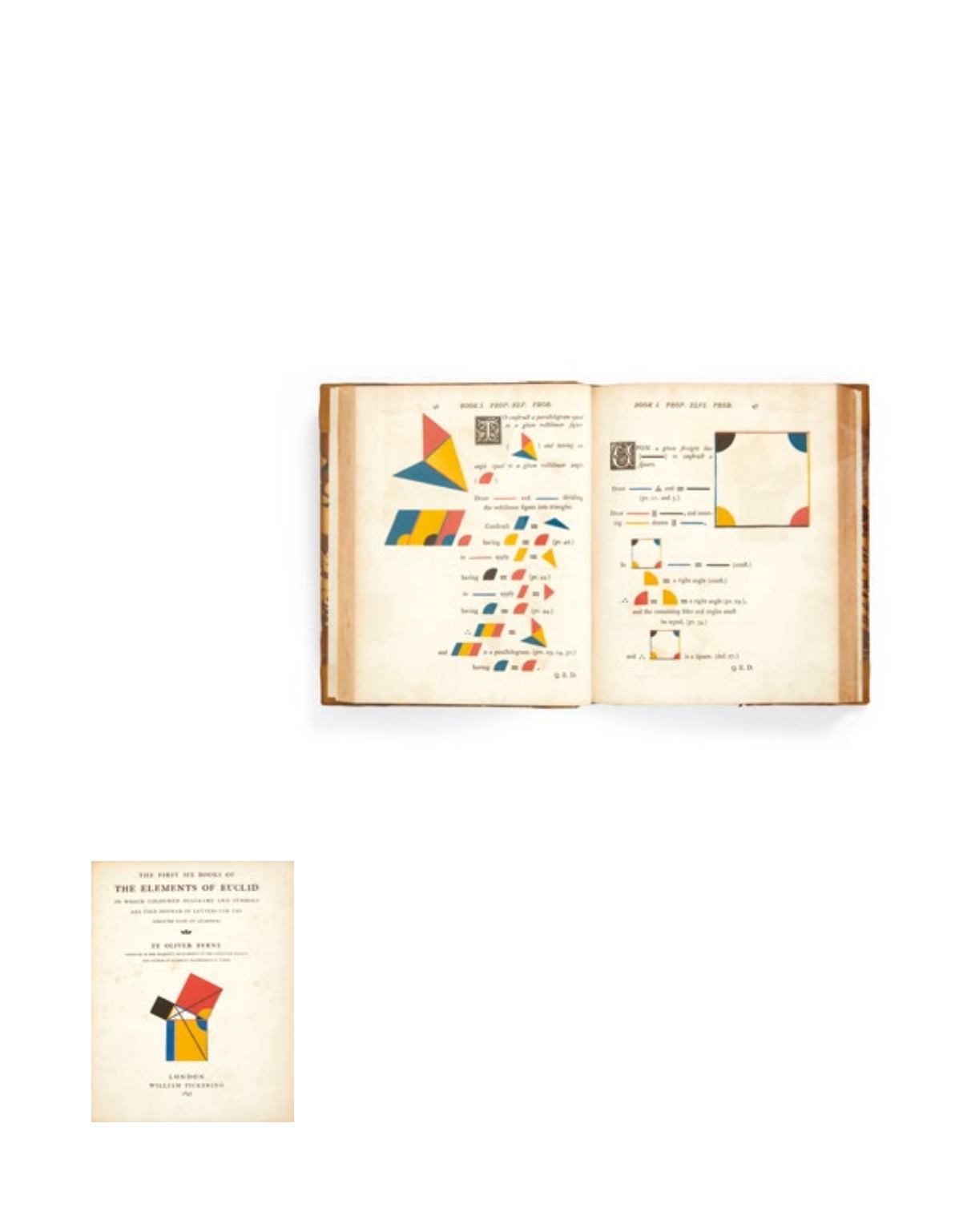

164
136
EUCLIDE.
The First Six Books of the Elements of Euclid in which Coloured Diagrams and Symbols
are Used Instead of Letters for the Greater Ease of Learners. By Oliver Byrne.
Londres, Charles
Wittingham de la Chiswick Press pour William Pickering, 1847.
In-4 (234 x 187 mm) de XXIX,
268 pp. ; demi-veau à coins, dos à nerfs, tranches mouchetées
(reliure de l’époque).
1 500 / 2 000
€
Vitry, 325.
Édition originale de la spectaculaire édition donnée par Oliver Byrne, formidablement imprimée par
Charles Wittingham avec les illustrations tirées en quatre couleurs.
Destinée à faciliter l’enseignement de la géométrie euclidienne cette édition est un tour de force pour
l’histoire de l’illustration en couleurs. L’auteur note dans la préface : “
This work has a greater aim than
mere illustration ; we do not introduce colours for the purpose of entertainment... but to assist the mind
in its researches after truth, to increase the facilities of instruction, and to diffuses permanent knowledge.
The object of this work is to introduce a method of teaching geometry, which has been much approved of by
many scientific men in this country, as well as in France and America
”.
Très nombreux schémas et formes géométriques imprimés en couleurs dans le texte.
Avec une esthétique inhabituelle, cette édition combine couleurs primaires franches et précisions
mathématiques. Cette rencontre entre art et science annonce la vigueur des mouvements
De Stijl
et
Bauhaus
.
Faux-titre ôté par le relieur, quelques rousseurs ; dos et coins refaits en gardant des parties anciennes.
First edition of Byrne’s spectacular rendering of Euclidian geometry using four-colour printing. The
stark use of primary colors was envisaged by Byrne as a teaching aid. Byrne’s depiction of Pythagoras
is a classic, with the squares being visually interpreted so in vivid blocks of colour. In a technical tour-
de-force, Whittingham skillfully aligned the different color blocks for printing to produce one of the
oddest and most beautiful books of the whole century (see Ruari McLean,
Victorian book design &
colour printing
, Faber & Faber, 1963). The book has become the subject of renewed interest in recent
years for its innovative graphic conception and its style which prefigures the modernist experiments of
the
Bauhaus
and
De Stijl
movements.
















